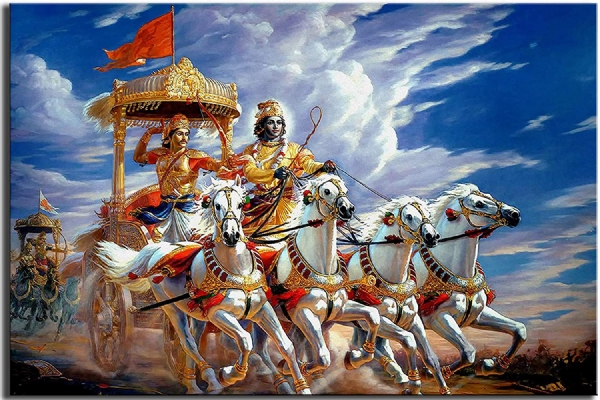Mahabharata Month! Pune's Bhandarkar Institute dedicates the month to compilation of 'Critical Edition of the Hindu Epic'
Total Views |
Pune, Jun 2: The Bhandarkar Oriental Research Institute of Pune is celebrating the entire month of June as 'Mahabharata month', dedicating it to the compilation of the Critical edition of the epic. The Critical Edition of the Mahabharata is the most cherished creation of the Bhandarkar Oriental Research Institute (BORI).

The edition is also going be the source material for BORI's upcoming course, "18 Parvans of Mahabharata: An Introduction to the Incredible Epic". The BORI shares through a tweet that ever since its completion, the critical edition has become the gold standard for the study of Mahabharata. It has been the most authentic source of reference for scholars around the world, and even for BR Chopra, who credited it as the source in his popular TV series. The introduction of the Critical Edition explains what they aimed for succinctly, stating that "It is not the best text of the great epic... It only claims to be the most ancient one according to the direct line of transmission, purer than others as it is free of the obvious errors of copying and spurious addition"
Mahabharata is often deemed the fifth Veda, meaning it is equally venerable as the four Vedas. The critical edition calls it "an inexhaustible mine for the investigation of religion, mythology, philosophy, law, customs, political and social institutions of ancient India." A.K. Ramanujan once said that no Indian reads Mahabharata for the "first time". For many centuries common Indians have grown up with the stories and morals of the Mahabharata. But the variations in recensions of the Mahabharata matched the diversity of India equally maddeningly. From 19th century onwards scholars and students of the epic increasingly demanded for a "Critical Edition" i.e., a common account to put it in layman's terms. The BORI which was founded in 1917, took up this herculean task in 1919.
N.V Udagikar initiated the project with a specimen of "Virat Parva", followed by the appointment of V.S. Sukthankar as the first general editor of the project in 1925. He continued with the responsibility until his death on 21 January 1943. In his own words , “What the promoters of this scheme desire to produce and supply is briefly this: a critical edition of the Mahabharata in the preparation of which all important versions of the great epic shall have been taken into consideration." With the idea, many manuscripts were collected and collated from all across the country, from Kashmir to Kerala. They were in many scripts and languages. Visvabharati of Sir Rabindranath Tagore and Sarswathi Mahal, Thanjavur also helped the institute in the collation effort.
Each manuscript was analyzed and compared stanza by stanza; even the phrasing & wording in each line. In the final form, stanzas appearing in the most number of manuscripts were taken as the authentic account. And that formed the "constituted text", which has 89,000 stanzas. The critical edition also comes with a comprehensive "Critical Apparatus" which gives differing versions of the stanzas in the constituted text, and a Prolegomena on the material and methodology (volume I), written by V.S. Sukthankar. After V.S. Sukthankar, S.K. Belvalkar was appointed as the general editor on April 1, 1943. Upon his retirement P. L. Vaidya was appointed as General Editor of the project in 1961, while R. N. Dandekar became the joint general editor in 1957.

This monumental effort needed public support and funding. It was the munificent donation of Shrimant Balasaheb Pant Pratinidhi, then chief of the Aundh Sansthan (in current satara district) that provided the much needed impetus to the project. After 48 years and a critical study of 1259 manuscripts, the project was completed in 1966. BORI has also tweeted a historic photo that depicts Dr. Sarvapalli Radhakrishnan, then President of India, felicitating Dr. P. L. Vaidya, on the occasion of the conclusion of the project, September 22, 1966.